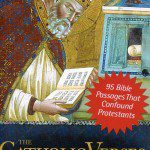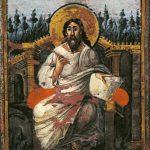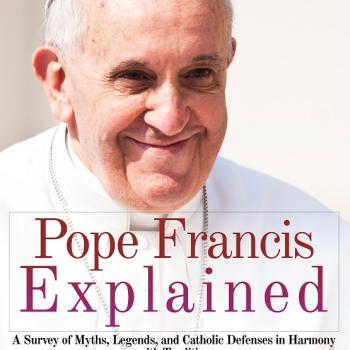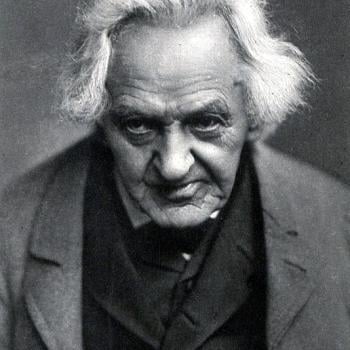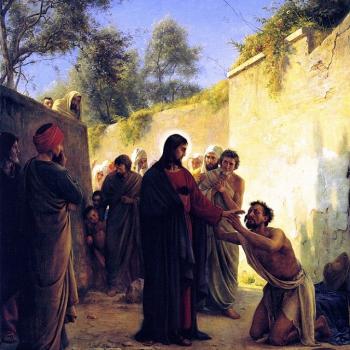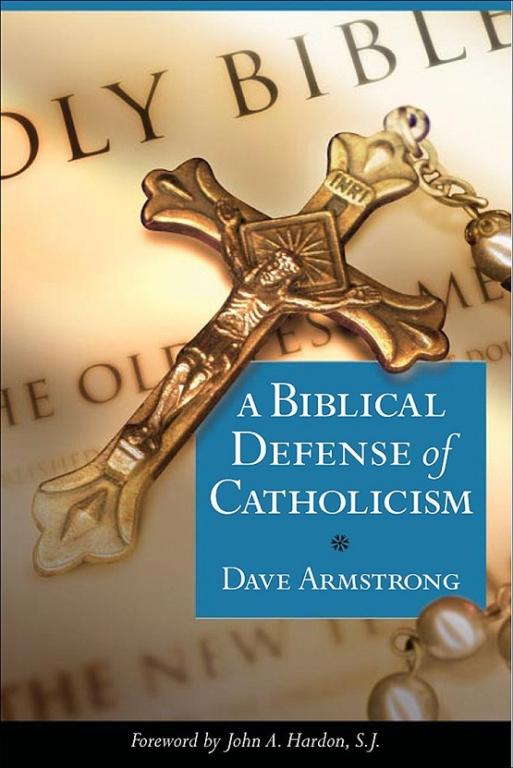
[see full book and purchase information]
***
[from my book, A Biblical Defense of Catholicism, completed in 1996]
*****
In the Nicene Creed, which is accepted by most Christians, the Christian Church is described as being “one, holy, catholic, and apostolic.” These are known as the four marks of the Church. The notions of holiness and catholicity are not much in dispute. The mark of holiness may be defined as the possession, and dissemination of the sublime, holy, Christ-centered moral code of Christianity (as best exemplified by saints or otherwise great, godly figures). All parties – while disagreeing on many particulars – concur that this is a central function of the Church. Catholicity simply means universal. Here Protestants and Catholics disagree only on the nature of that Church which is to be considered universal and all-encompassing.
This brings us to the oneness and apostolicity of the Church, where the disagreements are great indeed. Most Protestants (especially evangelicals) see unity and oneness subsisting primarily or solely in the inner, invisible, spiritual unity of those who are in fact in Christ by virtue of being justified, or born again, or regenerated (with or without baptism, depending on denomination). For them, the church consists of the Spirit-filled, predestined elect, who will persevere and are saved, now and in eternity.
The Catholic Church has always proclaimed this unifying characteristic also, under the broad and rich concept of the Mystical Church (under which it acknowledges Protestantism), yet it doesn’t pit the Mystical Church against the institutional, or visible Church, as most evangelicals do. For Catholics, then, the issue of oneness is substantially related to organizational and practical aspects of ecclesiology. Catholics believe that the Church is both organism and organization, not merely the former. The Mystical and visible “churches” are like two circles which largely intersect, but which are not synonymous. They exist together – somewhat paradoxically and with tension – until the “end of the age.” But what kind of organization is this Church, which includes within itself these two aspects (as well as many others)?
At this point in the discussion Catholics appeal to the hierarchical, or episcopal (that is, under the jurisdiction of bishops) nature of Church government. Furthermore, Catholics maintain that this form is divinely-instituted and biblical, therefore not optional or of secondary theological importance.
Finally, Catholics believe that bishops are – by the intention of Jesus Christ – the successors of the Apostles (the concept of apostolic succession). This is the methodology whereby the Catholic Church traces itself back historically in an unbroken succession to the Apostles and the early Church. Catholicism thus greatly emphasizes both historical and doctrinal continuity, whereas evangelical Protestants are more concerned with maintaining the passion and intense commitment and zeal of the Apostles and early Christians, and are less interested in governmental forms or doctrines which are now regarded as Catholic “distinctives.” They tend to see clearly in the Bible and early Church those doctrines with which they agree, but overlook those which are more in accordance with Catholicism, such as the episcopacy, purgatory, and apostolicity.
We shall examine the marks of the Church with which Protestants (despite many exceptions) largely disagree: its visibility, the hierarchy of bishops, apostolic succession, and related issues such as ordination, the duties of priests, and sectarianism. Most of these questions are concerned ultimately with authority per se. Protestants emphasize biblical authority, and Catholics ecclesiastical and episcopal leadership, and Tradition. But if the Bible points to and encourages submission to the latter, then the two types of authority cannot (biblically) be
opposed.
One of the undeniable aspects of unity and oneness in the Bible is the constant warning (especially in the writings of St. Paul) against (and prohibition of) divisions, schism, and sectarianism, either by command, or by counter-example (Matthew 12:25, 16:18, John 10:16, 17:20-23, Acts 4:32, Romans 13:13, 16:17, 1 Corinthians 1:10-13, 3:3-4, 10:17, 11:18-19, 12:12-27, 14:33, 2 Corinthians 12:20, Galatians 5:19-21, Ephesians 4:3-6, Philippians 1:27, 2:2-3, 1 Timothy 6:3-5, Titus 3:9-10, James 3:16, 2 Peter 2:1). This is clearly no trifling matter. Our Lord even makes unity a means by which the world might believe that the Father sent the Son (John 17:21,23), and prays that it will be as profound as the unity of the Trinity itself (John 17:21-22). St. Paul makes stirring up division a grounds for virtual exclusion from the Christian community (Romans 16:17), and says that divisions (in effect) divide Christ (1 Corinthians 1:13). This has always been one of the strengths of the Catholic position over against Protestantism, and Protestants are themselves increasingly alarmed over what they consider to be a scandalous concurrence between denominationalism and sectarianism, which all agree is condemned in Scripture.
One of the sincere and seemingly reasonable grounds for forming a new sect is the desire to separate from sinners and sin, which may be infecting the group left. Yet the Bible clearly teaches that the Church (especially in its institutional sense) is comprised of both saints and sinners, good and bad. We see this most indisputably in several parables of Jesus about the kingdom of heaven (that is, the Church), such as the wheat and the weeds (or tares), where Jesus says that they will grow together until the final Judgment, or harvest time (Matthew 13:24-30; cf. Matthew 3:12). He compares the Church to a fishnet which draws good and bad fish, ultimately separated (Matthew 13:47-50), and a marriage banquet, from which one guest was cast out into the outer darkness (Matthew 22:1-14). This parable ends with the famous phrase, “Many are called, but few are chosen,” which may be interpreted as the distinction between lukewarm, or dead, or nominal Christians and the actual elect who will be saved in the end. Both are present in the Church, according to Jesus. A similar state of affairs is seen in the parables of the ten virgins (Matthew 25:1-13) and the talents (Matthew 25:14-30). And Jesus’ description of Christians and the Church as a city set on a hill (Matthew 5:14; cf. 5:15-16), is an obvious reference to the visibility of the Church. In no way can this city be regarded as invisible.


